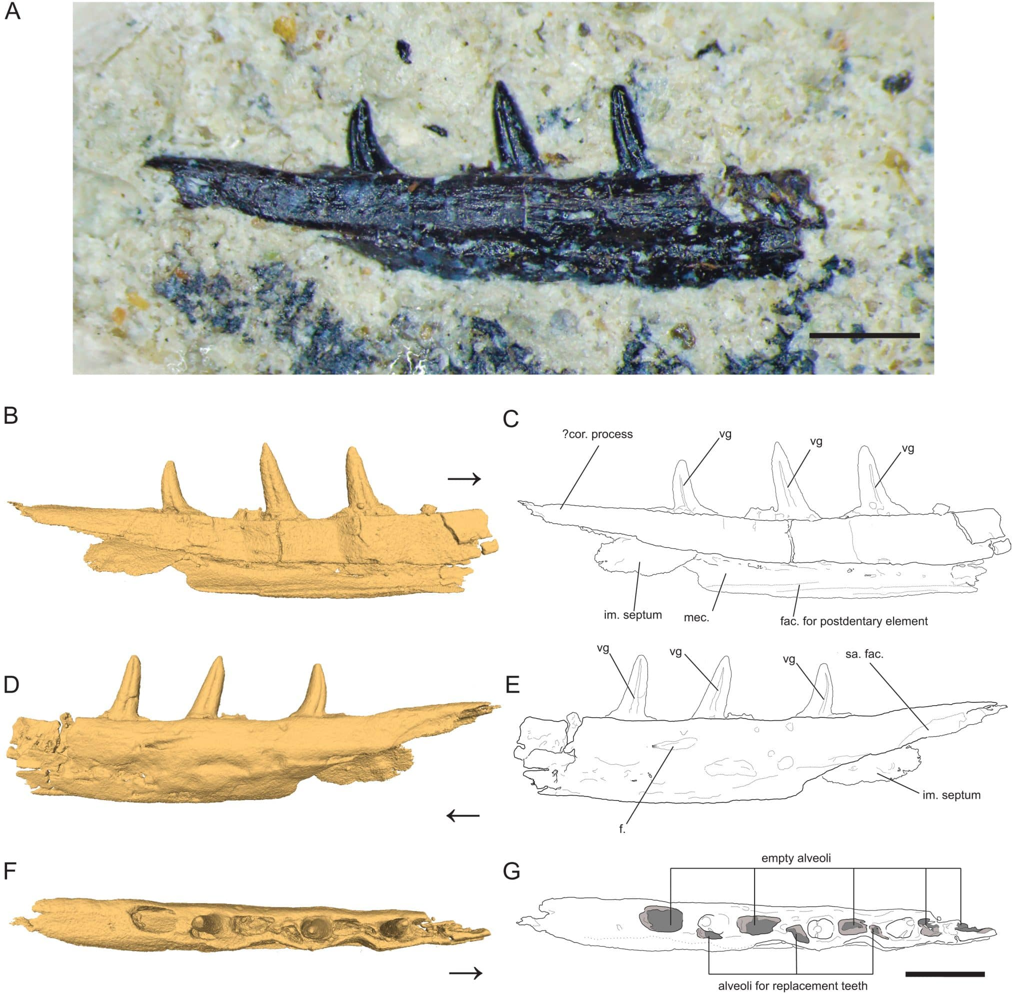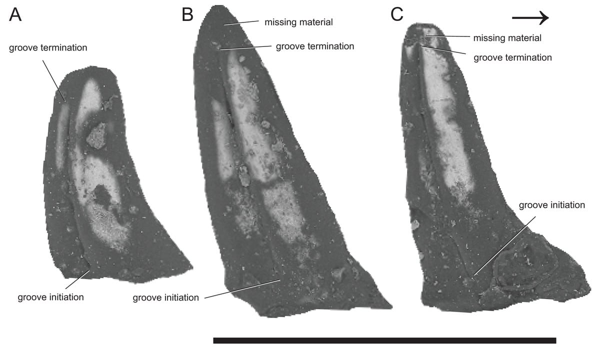Paleontologists have discovered a small, venomous lizard that lived over 200 million years ago.
Among the diverse array of hunting and defense tools found in the animal kingdom, venom stands out as particularly exotic. This adaptation is present in various species, including certain birds, cephalopods, tropical frogs, and many reptiles. Venomous snakes immediately come to mind: they possess specialized channels in their fangs through which toxins are delivered into the wounds of their prey. A similar mechanism can be observed in the viper, whose name speaks for itself. In contrast, Komodo dragons utilize venom to enhance their already dangerous teeth and claws, inducing shock and preventing the blood of their prey from clotting.
Some extinct ancestors of modern reptiles also wielded similar weaponry. The oldest known venomous lizard is considered to be the uatchitodon (Uatchitodon) — a late Triassic reptile that lived around 220 million years ago. Only teeth have been discovered from this species, but their structure, particularly the grooves on the tooth surfaces, indicated to paleontologists that the animal's bite was venomous.
Similar grooves have been found on the fangs of Sphenovipera jimmysjoyi — an extinct representative of the clade of lizards that lived during the mid-Jurassic period. Interestingly, its closest living relative is the tuatara.

Recently, the journal PeerJ published a description of a unique finding of venomous teeth from a previously unknown species of reptile. American paleontologists discovered a fragment of the lower jaw of an extinct lizard in Arizona, which retained several teeth. Experts recognized channels on these teeth that apparently served to deliver venom into the wounds of prey.
According to the researchers, the discovered animal belongs to the subclass of reptiles Diapsida, but due to a lack of fossil evidence, it is challenging to determine its precise position on the phylogenetic tree. Nevertheless, certain characteristics of the jaw structure and the three teeth (which do not exceed 0.8 millimeters in size) allowed paleontologists to classify the find as a new genus and species.
They named the lizard Microzemiotes sonselaensis — the first part of the name is derived from the Greek words for “small” and “punisher,” while the second part comes from the name of the geological formation in Arizona where the specimen was found. The age of this location indicates that M.sonselaensis lived approximately 217.7-213.87± 0.078 million years ago, during the Norian stage of the Late Triassic period.

The grooves on the lateral surfaces of the three teeth suggest that the discovered animal used venom for hunting or defense. The enamel is well-preserved, so it cannot be assumed that these grooves resulted from wear. The conical and curved shape of the teeth most closely resembles that of the living Arizona viper (Heloderma suspectum), which is also nicknamed the “Gila monster.”
The authors of the article hypothesized that the method of venom delivery in the new lizard was similar to that of the vipers, suggesting that poisoning could occur passively during prolonged bites — capturing prey for about an hour. Paleontologists do not rule out that M.sonselaensis may have coexisted with uatchitodon; however, these reptiles had different hunting strategies. The teeth of uatchitodon allowed it to slice through the body of its prey, while the recently discovered predator likely punctured it.
Additionally, M.sonselaensis was probably a relatively small animal — no larger than a shrew — and preyed on similarly sized vertebrates or insects. This is indirectly supported by the wear on the tips of the teeth: they may have been worn down by contact with a chitinous exoskeleton.